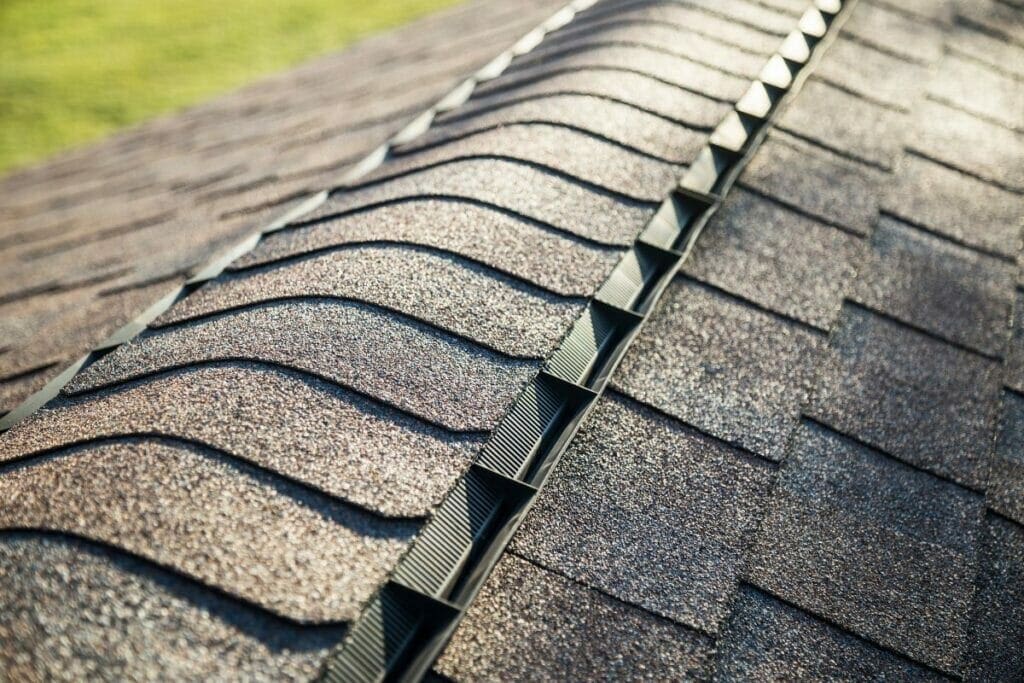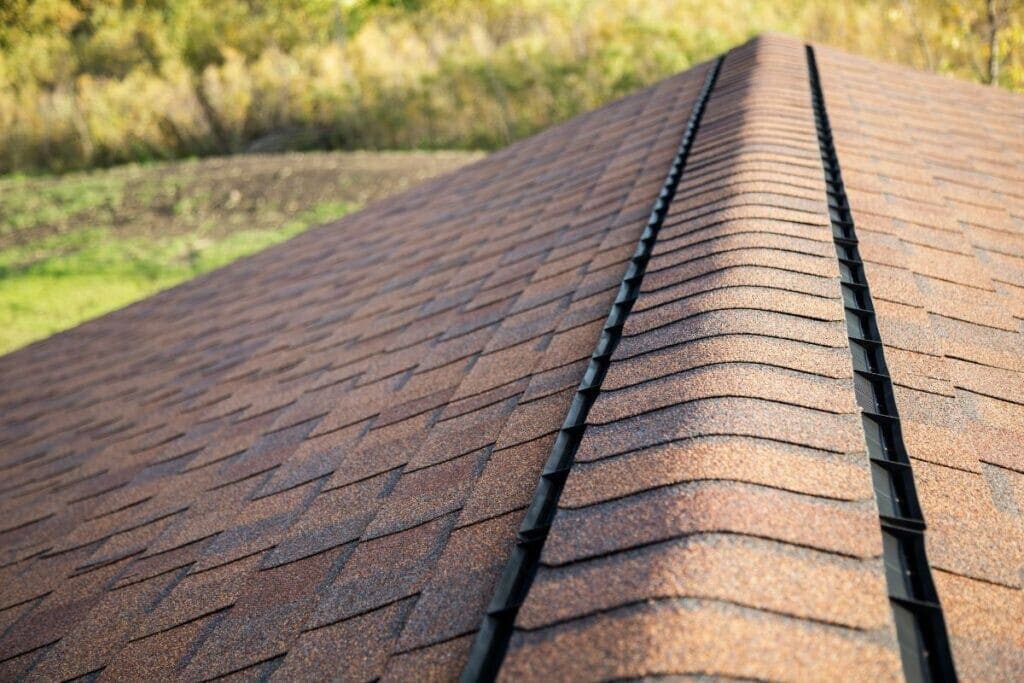When it comes to designing the ideal roof for your dream home, every detail matters. One often overlooked but crucial aspect is the roof ridge. A properly designed roof ridge not only adds an architectural charm but also plays a vital role in ensuring your roof’s longevity and structural integrity. This blog post will walk you through the step-by-step process of designing the perfect roof ridge.
What Is A Roof Ridge?
At its core, a roof ridge refers to the highest point of a roof where two opposing roof planes meet. It is the peak of the roof that adds character and visual appeal to your home. However, the roof ridge goes beyond its aesthetic value and serves a functional purpose as well. It provides structural stability, prevents water build-up, and offers ventilation opportunities for your home. The roof ridge acts as a connecting point for the roof slopes, creating a unified and cohesive structure.
The Importance Of A Well-Designed Roof Ridge

A well-designed and properly installed roof ridge offers numerous benefits for homeowners. Let’s explore some of the key advantages:
1. Structural Stability
A perfect roof ridge provides structural stability by connecting and supporting the roof slopes. It ensures that the weight is distributed evenly, reducing the risk of sagging or collapse. This structural integrity enhances the overall durability and lifespan of the roof.
2. Water Protection
The roof’s ridge directs rainwater down its slopes and into the gutters, ensuring proper drainage and minimizing the risk of leaks or water damage.
3. Ventilation Opportunities
A well-designed roof ridge allows for proper ventilation, which is essential for maintaining a comfortable and energy-efficient home. Ventilation options such as roof ridge vents or other systems help remove excess heat and moisture, improving air circulation and reducing the need for excessive cooling.
4. Aesthetic Appeal
A perfectly installed roof ridge blends in with the roof while standing out, and increases the roof’s aesthetic appeal. It creates a focal point and can be customized to match architectural style and design preferences. A carefully designed and well-maintained roof ridge elevates the curb appeal and value of your property.
5. Energy Efficiency
A well-functioning roof ridge increases the energy efficiency of a building. By allowing the hot moist air in the attic to escape and be replaced by cool, fresh air, the roof ridge maintains the temperature inside the building and, thus, prevents your air conditioning system from working overtime. This ultimately reduces the cost of your energy bills and provides you with satisfaction and peace of mind.
Understanding Ridge Cap Shingles And Their Importance

Ridge cap shingles are as important to your home and the roof’s integrity as the roof ridge is. Without the ridge cap shingles, the ridge and, therefore, the attic, would remain exposed to the weather elements. The water and air entering through a ridge with no ridge cap shingles can damage your roof and rip away the roofing materials entirely. The damage will eventually increase your roof repair and replacement cost.
Installed over the ridge, the ridge cap shingles overlap with the adjacent roofing materials, creating a seamless transition and a watertight seal. These thick and durable shingles safeguard the ridge and the ridge vent from harsh elements and UV exposure.
It is important to use the manufacturer-recommended ridge cap shingles that match the roofing material used for the rest of the roof. To cut down on the costs involved, many homeowners try to install the same 3-tab shingles they use for the entire roof. Since the ridge is a critical point on your roof, installing regular shingles isn’t recommended. Regular shingles may not provide the same amount of protection that ridge cap shingles do.
Ridge cap shingles also differ from the starter shingles, which are installed along the ridge line and eaves.
Designing The Perfect Roof Ridge: A Step-By-Step Guide
Designing a perfect roof ridge requires careful planning and attention to detail. Here is a step-by-step guide to help you create a roof ridge that not only looks great but also functions effectively:
Step 1: Assess The Design Of Your Roof
Before designing the roof ridge, it is crucial to assess the overall roof design and slope. Consider factors such as the pitch of the roof, the architectural style of the house, and any specific requirements or constraints.
Step 2: Choose the Type of Ridge
Based on your roof design and preferences, select the type of ridge that best suits your needs. Consider factors such as structural integrity, attic space, ventilation requirements, and aesthetic appeal.
Step 3: Determine Ridge Dimensions
Calculate the dimensions of the ridge based on the roof’s size and pitch. Ensure the ridge is proportionate to the rest of the roof and provides adequate support and stability.
Step 4: Plan Ventilation Opportunities
If ventilation is a priority, incorporate ridge vents or other ventilation systems into the design. Ensure that the ventilation options align with the chosen ridge type and provide adequate airflow for your home.
Step 5: Consider Your Material Options
Select suitable materials for the ridge based on durability, weather resistance, and aesthetic appeal. Common materials include wood, metal, and synthetic options such as composite or PVC.
Step 6: Ensure Proper Installation
Proper installation is crucial for the functionality and longevity of the roof ridge. Engage professional contractors with experience in roof construction to ensure accurate installation and adherence to building codes and regulations.
Step 7: Regular Maintenance
Once the roof ridge is installed, regular maintenance is essential to ensure its continued performance. Inspect the ridge periodically for any signs of damage, such as cracks or loose shingles, and address them promptly to prevent further issues.
By following these steps, you can design a perfect roof ridge that enhances the overall aesthetics, functionality, and longevity of your roof.
Here is a list of the Top 19 Roofing Companies In New Jersey you would love to install your roof with.
Unraveling The Truth About Roof Ridge Vents
One aspect closely associated with roof ridges is the ridge vent. A roof ridge vent is an essential component that contributes to the overall ventilation and airflow in your home’s attic space. It is installed along the length of the roof ridge, effectively allowing hot air to escape and fresh air to enter.
A roof ridge vent works in conjunction with other ventilation systems, such as soffit vents or gable vents, to create a balanced airflow. This balanced airflow prevents heat and moisture buildup, reducing the risk of mold growth, wood rot, and other potential issues.
To ensure the effectiveness of a roof ridge vent, it is essential to have proper insulation and sealing in the attic space. This prevents the mixing of hot and cold air, maximizing the efficiency of the ventilation system.
Also Read: How Roof Ridge Vents Lower Your Energy Bills
Maintaining The Roof Ridge For Timeless Appeal And Improved Ventilation
To maintain the timeless appeal and functionality of your roof ridge, regular maintenance is key. Here are some maintenance tips to keep your roof ridge in optimal condition:
To keep your roof in good condition, it’s important to inspect the ridge regularly for any signs of damage, including cracks, loose or missing ridge cap shingles, or gaps. If you notice any issues, address them promptly to prevent further damage and maintain a watertight seal.
Additionally, make sure to clear any debris, leaves, or branches that may accumulate on the roof ridge, as they can obstruct proper water flow and ventilation.
Do You See Any Signs of Damage Around Your Roof’s Ridge? Seek Professional Assistance
Is the area around your roof ridge damaged? Then you must look for professional assistance. Call Champion Exteriors In New Jersey today at (609)-845-3576 and consult a professional roofer for any roof repairs or replacements you may need.
FAQs
A. A roof ridge serves multiple purposes. It provides structural stability by connecting and supporting the roof’s sloping sides. It also acts as a barrier against water, preventing leaks and water damage. Additionally, a roof ridge allows for ventilation, improving energy efficiency and indoor comfort.
A. Signs of a damaged roof ridge include cracked or loose ridge cap shingles, gaps, or water leaks. If you notice any of these issues, it is recommended to consult a professional roofing contractor for a thorough inspection and necessary repairs.
A. Installing a roof ridge vent requires the proper knowledge and expertise. Hiring professional roofing contractors for the installation is recommended to ensure accurate placement, sealing, and adherence to building codes and regulations.


